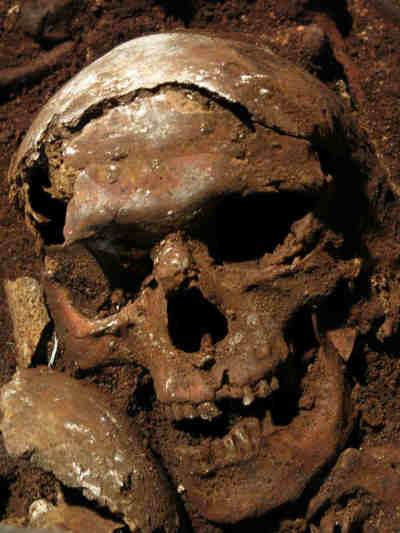Archaeology Discovery: 2,000-Y-O Military Barracks Found in Rome During Subway Line Dig

Construction workers happened upon a surprising discovery in Rome, Italy, recently when they found a 2,000-year-old military barracks while digging the city's new subway line.
Francesco Prosperetti, the head of archaeology in the European city, told "CBS This Morning" that ornately-decorated military barracks from Emperor Hadrian's time were discovered as city officials dug the new C subway line at the Amba Aradam station.
Prosperetti described the 39 military barracks as being ornately decorated with mosaics and frescoes. The remains of 13 humans, as well as bronze coins and jewelry, were also found.
Along with housing storage rooms and sleeping quarters for Emperor Hadrian's army, the barracks were also believed to be the personal living quarters for the leader's bodyguards, media outlets report.
"Their rooms were decorated with mosaics and frescos," Prosperetti said. "If we hadn't built this station, we would never have found these Roman remains."
CBS News reports that the city plans to leave the important archaeological find in the subway system so travelers will be able to view the artifacts as they board and de-board the subway.
Rossella Rea, a representative from the city's Culture Ministry, told The Associated Press that the discovery is "exceptional" for its location and its preserved state. She added that the find indicates that this part of the city served as a military neighborhood 2,000 years ago.
"It's exceptional, not only for its good state of conservation but because it is part of a neighborhood which already included four barracks. And therefore, we can characterize this area as a military neighborhood," Rea said.
Rea told The Telegraph that the depth at which the find was discovered, 9 meters, means that it would have been impossible to discover using modern archaeological equipment.
"The remains of the barracks were found 9 meters beneath street level, a depth which makes it almost impossible to detect ancient structures with even the latest instruments," Rea said. "It was a wonderful surprise. The barracks date from the first half of the second century AD and were abandoned in the third century when the Aurelian Walls were built around the city."
Along with having a depth of 9 meters, the barracks also extended 900 square feet.
Despite the recent discovery, offficials are still planning to open the new subway line within the next several years.
In another part of the city, construction workers have been trying to progress on the subway line at the Piazza Venezia as archaeologists uncover ancient evidence of the Roman Forum.
Angelo Bottini, superintendent of the city's archaeological team, told La Repubblica newspaper in 2015 that construction must continue without irreparably damaging the historical sites.
"The station at Piazza Venezia must be built," Bottini said, as reported by ABC News. "… but we need to work out where the clash between the line and antiquity will cause the least damage."





























